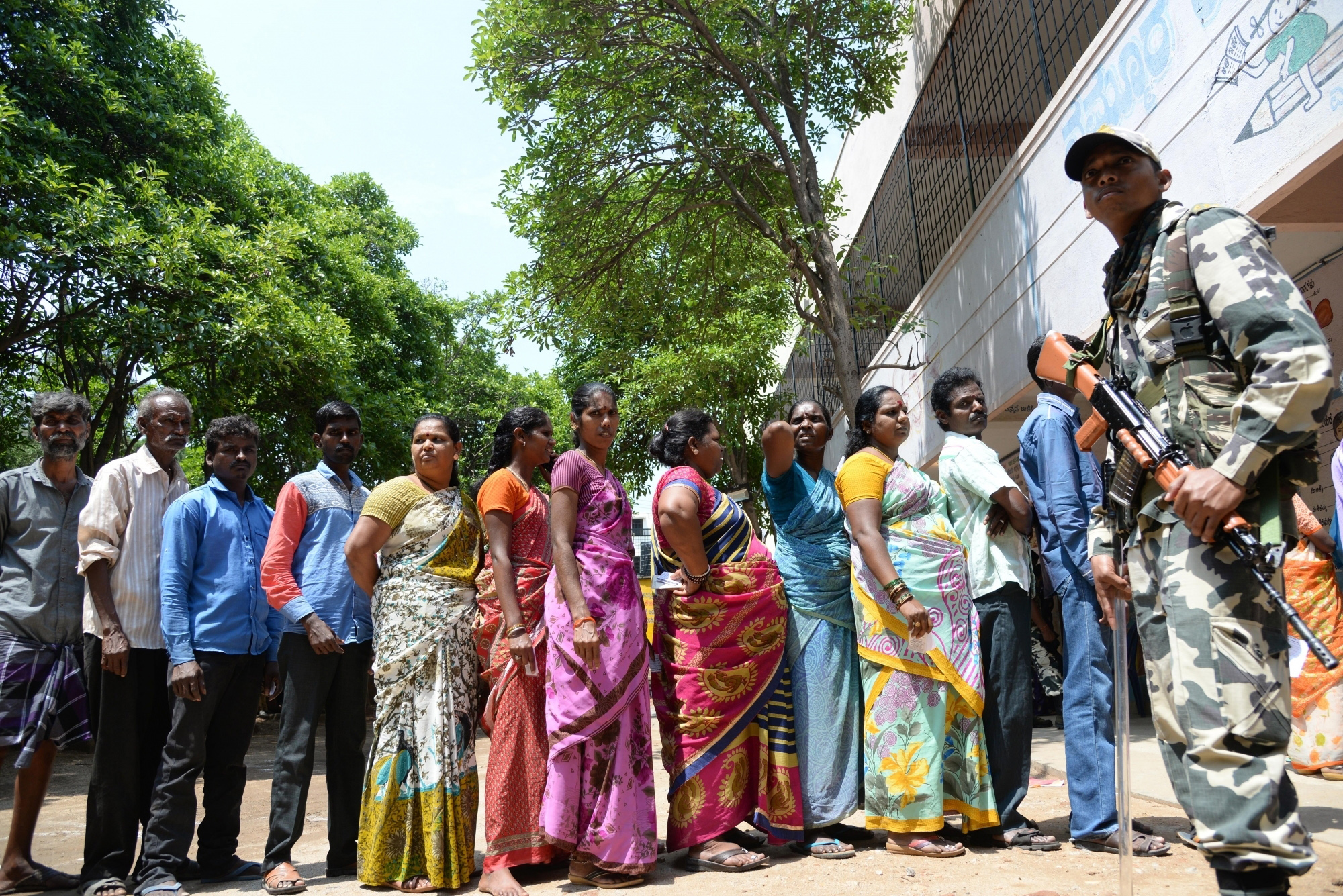Come 15 May, when the Karnataka Assembly election results are announced, these may have a deep impact on Prime Minister Narendra Modi’s future beyond 2018, even as he completes four years in office, 11 days from Tuesday, on 26 May. But 15 May will also decide if Karnataka will continue to live inside the cultural-ecosystem of Kannada and Kannadigas, or would open up and invite “Hindi India” into South India. The Bharatiya Janata Party had won the state before. But its victory in 2008 was a non-starter in many ways because of the unstable nature of its government. Ten years later, the BJP under the Narendra Modi-Amit Shah duo sees an attractive opening here because out of all the South Indian states, Karnataka is the least ferocious in language chauvinism, particularly when compared to the Telugu states and Tamil Nadu. The software industry has brought in many cultural changes in Karnataka and BJP finds that conducive to its political agenda.
In Karnataka, Modi and Shah needed to create a certain image of the party to overcome the language barrier. Modi needed to transcend his persona on ground zero in such a way that the Kannada voters were mesmerised enough to forget the comfort factor that they enjoyed with Chief Minister Siddaramaiah and Nehru-Indira’s century-old Congress. Modi’s rhetoric was different this time as he tried to connect with the average voter. He was too conscious of the language barrier.
The Kannadiga voters had chosen BJP in the Vajpayee-Advani era, riding on the goodwill that B.S. Yeddyurappa enjoyed in the state. But a daringly ambitious BJP made Modi, Yogi Adityanath and Amit Shah the faces of its campaign this time.
Most observers say that the Karnataka match is between Siddaramaiah and Modi. While partly correct, it would be more accurate to say it’s between Kannada and Hindi and into this has got mixed a subtext of a different variety—that of Hindutva.
Modi-Shah’s politics is, quintessentially, based on the political practice of symbolism. Modi has no competition in the game, so far. His visit to Sita’s birthplace in Janakpur, Nepal on a lean day before the crucial voting in Karnataka was a clever political ploy to remind voters what he stands for.
Between 2013 and 2016, when the Modi-Shah duo harvested state after state in the Hindi heartland and in the west and Northeast, there was a touch of innocence among voters. Four years of Modi rule and India stands deeply divided over the style and substance of Modi-Shah’s politics. So, in Karnataka, the duo did not have the advantage of writing on a blank slate. When they arrived in Bengaluru to capture the minds of Kannadigas, they had only B.S. Yeddyurappa, a tainted local leader whose sphere of influence did not extend beyond his own Lingayat community. Even Yogi Adityanath proved to be a dampener. What kept BJP in the game were Modi’s energetic rallies against Chief Minister Siddaramaiah’s quick counters that were both witty and aggressive.
The undercurrent in Karnataka was: Should Kannada speaking voters go for status quo by siding with the Kannadiga Siddaramaiah, or should they opt for change and open the gates of South India to a “Hindi-speaking” nationalist leader who will bring in fundamental changes once BJP gets control of Karnataka?
The election had no pan-Karnataka issue. It witnessed no tsunami on the ground. Anti-incumbency against Congress wasn’t there in all the regions. In fact, the moods and issues were different in different regions. But that cultural question persisted in the minds of many voters: Why and how much to open up to this new BJP of Modi-Shah?
There was a large number of non-Kannadiga, southern “secular” players in the field who tried to ensure BJP’s defeat and help Siddaramaiah. These include not only leaders belonging to Muslim and Christian communities, but also anti-Hindi forces and political outfits who do not want the BJP form of Hindi nationalism in South India.
Congress was a divided house at the top but it had CM Siddaramaiah, who displayed enough boldness to counter the Modi-Shah duo in a psychological warfare during campaigning. He worked hard to ensure that the buzz around “anti-incumbency” against his government didn’t find much traction. While Modi came to Karnataka when the “glass half empty” narrative against his government was catching up due to farmers’ distress and economic slowdown after demonetisation and GST. However, the larger political and cultural issues of language along with Karnataka’s asmita subsumed the development and corruption issues connected to both the Central and state governments.
The undercurrent in Karnataka was Shakespearean for many voters. To be a part of Hindi India or not! Yes to the BJP of Modi-Shah will be the beginning of a new South India. Yes to Siddaramaiah will be construed as a vote for status quo.

